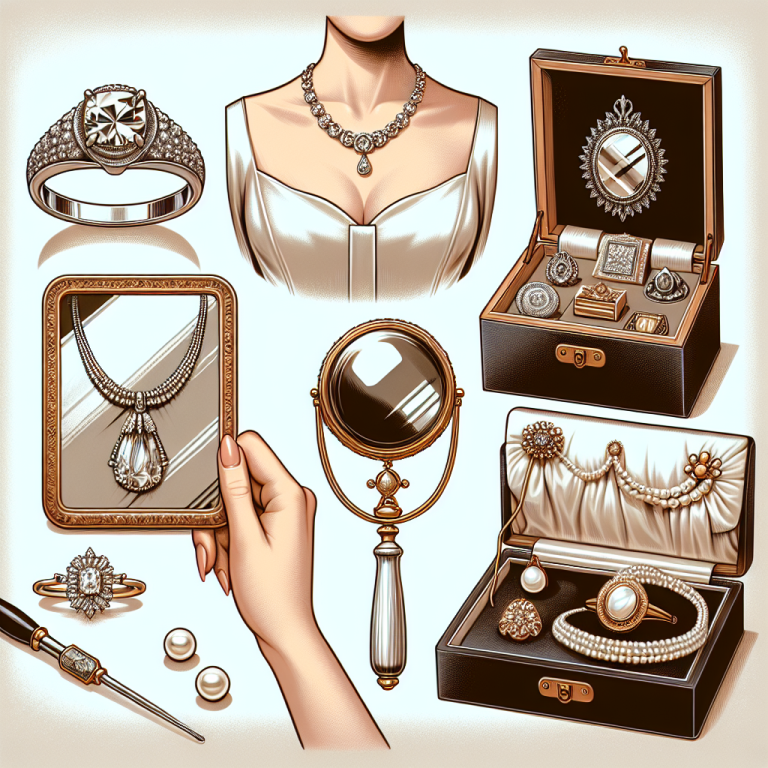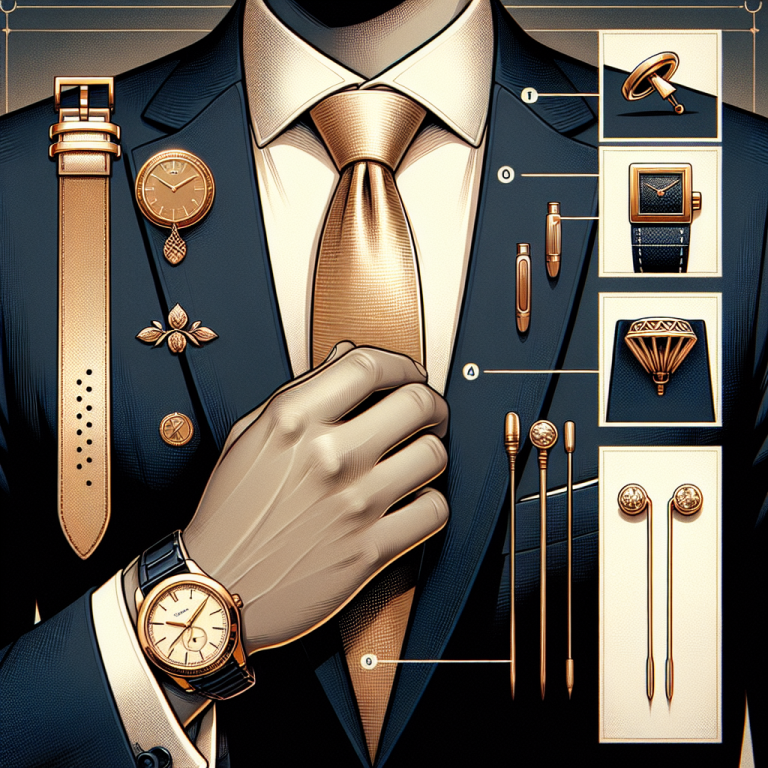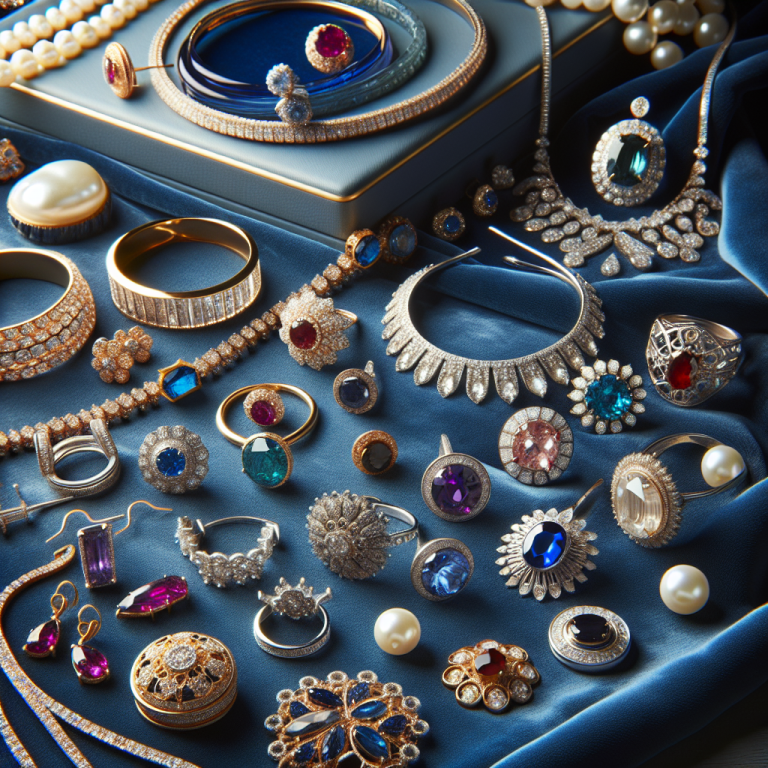No products in the cart.
Go Back to Shop
All CategoriesIdeal giftJewelry & accessoriesMan Jewelryshopping centerUncategorizedWomen Jewelry
Accessorizing Made Simple: How to Mix and Match Jewelry for Effortless Elegance
by admin
Jan 9, 2024
Table of Contents
-
Understanding the Basics of Jewelry Coordination
Embarking on the quest to coordinate jewelry to complement one’s outfit can seem daunting, yet with some guidance, the process becomes an avenue for personal expression. The key is to understand that jewelry is not merely an accessory but an extension of one’s style. The essentials of jewelry coordination involve balance, harmony, and a consideration of the event and attire. A simple rule of thumb is to choose a focal piece and allow other items to play supporting roles, ensuring that no item outshines another unless intentionally designed as the statement piece. Remember, the goal is to enhance your overall look, not detract from it.
-
The Art of Mixing Metals
Gone are the days of adhering strictly to gold or silver; the current jewelry landscape is all about the beauty of diversity. Mixing metals is a stylish way to add visual interest and a contemporary edge to your outfit. To execute this trend seamlessly, consider the color temperatures of your chosen metals. For instance, warm-toned gold pairs beautifully with the soft hues of rose gold, while cool-toned silver complements the crispness of white gold. Establish a piece that acts as a bridge, such as a two-tone watch or a necklace incorporating multiple metal types, to unify the metals in your ensemble. This tactic prevents the look from feeling haphazard and instead implies a curated, deliberate chicness.
-
Layering Necklaces Like a Pro
Layering necklaces is one way to inject personality and depth into your style. Begin by selecting necklaces of various lengths to create a cascading effect that draws the eye. Utilize a mix of textures or embellishments for added intrigue, such as combining a delicate chain with a chunky, pearl-studded piece. To keep your layering purposeful, make sure to space out the necklaces so that each can shine; this can be done by choosing chains with a couple of inches of difference in length. Don’t forget to consider neckline compatibility—V-necks work well with longer strands, while higher necklines may call for shorter, more delicate pieces.
-
Stacking Bracelets and Bangles
Accessorizing with bracelets and bangles doesn’t just add a touch of elegance to your outfit—it’s a form of self-expression. When stacking bracelets, consider the balance of colors and textures. Start with a base, such as a classic watch or a chunky bangle, and gradually add thinner bracelets to create depth. Mix materials like leather, beads, and metals. However, ensure that there is a common element, like a color scheme or material, to bring cohesiveness to your look. Whether you’re going for a bohemian look with woven bracelets or a sophisticated style with metallics, the key is to stack them in a way that looks intentional yet effortless.Explore a vast collection here.
-
Choosing Earrings that Complement Your Outfit
Earrings have the unique ability to frame your face and accentuate your features. When choosing earrings, think about the shape of your face, the length of your neck, and your hairstyle. For instance, drop earrings might flatter a heart-shaped face, while studs could be perfect for those with a longer neck. Additionally, if your outfit has intricate details or a bold pattern, consider simpler earrings to avoid a cluttered look. Conversely, if your ensemble is minimalistic, statement earrings can add a pop of personality. Don’t forget to consider the occasion—an elegant evening calls for diamonds or pearls while colorful gemstones can brighten up a casual daytime affair.
-
The Importance of Statement Pieces versus Subtle Accents
An essential factor in selecting jewelry is deciding between making a bold statement or adding a subtle touch of elegance. Statement pieces, like a sizable pendant necklace or chandelier earrings, become the focus and should be paired with simpler outfits to let the jewelry take center stage. On the other hand, delicate accents like a slender bangle or a fine chain can complement intricate or heavily patterned outfits without overpowering them. It’s all about the art of balancing elements to create an aesthetically pleasing look.
In summation, mastering the art of jewelry coordination is pivotal in enhancing your style and confidence. Blending various metals, layering necklaces with sophistication, stacking bracelets to showcase individuality, choosing the right earrings, and discerning when to opt for bold statement pieces or subtle accents are all crucial choices that reflect your personal fashion narrative. The ultimate aim is to curate a jewelry collection that offers versatility and adaptability to any ensemble, ensuring that you are prepared for any occasion with elegantly chosen accessories. As you integrate these tips into your style repertoire, remember that the most important element in jewelry coordination is a reflection of your unique taste and personality.
Curation of Your Jewelry Collection for Maximum Versatility
When it comes to creating a versatile jewelry wardrobe that flawlessly transitions from day to night and casual to formal, it’s essential to invest in timeless pieces. Start with staples such as a classic pair of stud earrings, a simple chain necklace, and a versatile selection of rings that can be mixed and matched. Furthermore, incorporate items that have personal significance, such as a family heirloom or a unique piece picked up on your travels. These will not only add character to your looks but also serve as conversation starters. Lastly, keep abreast of trends and introduce one or two contemporary pieces to your collection each season to keep it fresh and modern.
Frequently Asked Questions
- How do I start mixing metals in my jewelry pieces?
- Begin by combining warm and cool tones, such as gold and silver, in subtle ways like a two-tone watch or a mixed-metal ring. Prioritize pieces that feel natural together rather than forced.
- Can you layer chunky necklaces or should they be worn alone?
- Chunky necklaces can be layered if done correctly. Balance them with more delicate pieces to avoid overwhelming your look, and make sure each necklace complements the others in terms of style and spacing.
- What are some versatile bracelets to have in my collection?
- A versatile bracelet collection should include a classic watch, a cuff bracelet, bangles of various textures, and a couple of delicate chain bracelets for stacking.
- How do I choose earrings for a formal event?
- For formal events, opt for elegant options like pearl studs, diamond drops, or sophisticated metallic shapes that complement your outfit without overshadowing it.
- Should statement pieces always be the most prominent part of an outfit?
- Not necessarily. While statement pieces typically draw attention, they should not clash with your outfit. Let them stand out by pairing with simpler attire, but avoid competing patterns or embellishments.
What Our Customers Say
“The guidance I received on mixing metals has revolutionized my accessory game. I’ve never felt more confident!” – Emily
“Layering necklaces seemed so complex until I read these tips. Now I get compliments every time I try it out.” – Sarah
“This advice on creating a versatile jewelry collection was a game-changer. I love how each piece I own now has a purpose.” – Jessica
| Jewelry Type | Description | Style Tips |
|---|---|---|
| Necklaces | An assortment ranging from chokers to long strands | Layer by length and mix textures for an intriguing look |
| Bracelets | Includes bangles, cuffs, and charm bracelets | Combine various widths and materials; start with a watch or statement piece |
| Earrings | Studs, hoops, and drop earrings in various sizes | Match with your outfit’s neckline and consider hairstyle implications |
| Rings | Ranging from simple bands to bold statement rings | Stack rings on different fingers, mix metals and textures for an eclectic look |
To explore a world of elegant and versatile jewelry perfect for complementing your individual style, visit Rommie’s Jewelry Collection.




